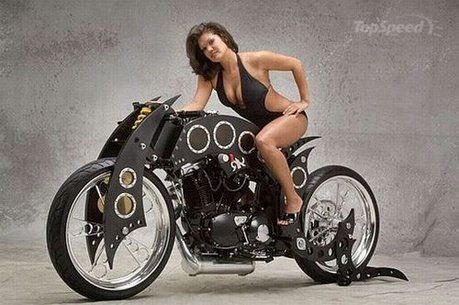 Ossa was a Spanish motorcycle manufacturer which was active from 1924 to 1982, best known for lightweight two-stroke-engined bikes used in Observed Trials and Motocross, was made originally by Orpheo Sincronic Sociedad Anónima (O.S.S.A.) and later by Maquinaria Cinematográfica, S.A., founded by Manuel Giró, an industrialist from Barcelona. The brand still remains popular around the world, and particularly in the United States, among enthusiasts from amateurs in historic motorcycle racing to hobbyists and collectors.
Ossa was a Spanish motorcycle manufacturer which was active from 1924 to 1982, best known for lightweight two-stroke-engined bikes used in Observed Trials and Motocross, was made originally by Orpheo Sincronic Sociedad Anónima (O.S.S.A.) and later by Maquinaria Cinematográfica, S.A., founded by Manuel Giró, an industrialist from Barcelona. The brand still remains popular around the world, and particularly in the United States, among enthusiasts from amateurs in historic motorcycle racing to hobbyists and collectors.The original Ossa company got its start in 1924 making movie projectors for its home market in Spain. After World War II, with improved two-stroke-engine technology obtained by the Allies from DKW in Germany, Ossa, like several other manufacturers from BSA to Harley-Davidson to Yamaha, began producing two-stroke engined motorcycles, with their first mass produced model being introduced in 1949. Ossa reached its highest production levels in the motorcycle boom of the 1960s, exporting large numbers of exports to other European countries, but also significantly, to North American markets.

In the United States and Canada, off-road motorcycling - and particularly the newly imported sport of motocross to which the light-weight and powerful Ossa was well suited - enjoyed a surging popularity. The Stiletto 250 in particular was a common sight to see in motocross races, as well as motorcycle trails, during its heyday of the late 1960s and early 1970s.

The Ossa firm was a strong supporter of all forms of motorcycle sport including: road racing, motocross, enduro and observed trials. They achieved early success in Grand Prix road racing, competing with an innovative monocoque-framed bike designed by Giró's son, Eduardo and ridden by Santiago Herrero. Herrero won four 250cc Grands Prix with Ossa before he died while competing at the 1970 Isle of Man TT. The loss of their star rider affected the Ossa team so much that they withdrew from road racing altogether.

However, Ossa contributed greatly to the sport of Observed Trials (which has come to be regarded as almost a Spanish national sport) in Europe and the United States alongside such other famous Spanish makes as Bultaco and Montesa. They turned to observed trials after the death of Herrero. Ossa hired British rider Mick Andrews to help design and ride their trials bike, and they went on to capture the 1971 and 1972 European Trials Championship, the forerunner to the FIM World Championship.

In addition to their suitability for racing, in terms of power-to-weight, Ossa motorcycles soon gained a reputation for reliability on and off the track. Despite this growing enthusiasm for the beautifully crafted and rugged bikes themselves, the firm suffered from a disorganized and sparse dealer network in the important American market. Ironically, the motorcycle boom that created a new market and allowed the European makes to reap great financial rewards, was also the seed of their own demise, and that of the numerous smaller firms, such as Ossa. With so many choices of make for both buyers and dealers, sales and service networks were not sustainable, and attempts to improve manufacturing by investing in new factories back home put Ossa, like virtually every other European firm, deep into the red.

In the declining years of the Franco Era, in 1975, the Spanish government steadily converted Spain's economic structure into one more closely resembling a free-market economy. The arrival of cheaper Japanese motorcycles into the local economy as well as a crippling employee strike in 1977 spurred the downfall of the Ossa company. In 1979, the company merged with Bultaco but this wasn't enough to stave off financial problems. By 1982, the Ossa factory closed down for good. Nonetheless, as a Vintage make, the Ossa still enjoys a significant following among home hobbyists and amateur racers.
.























































